There are so many tropical fruits in Nicaragua that are exported abroad, but there is nothing like eating them where they grew.
Without a doubt Nicaragua is one of my favourite countries in the world. It is certainly my favourite in Central America.
I first visited in 2010 and fell in love with the country. It has a beautiful landscape of volcanoes, islands, and stretches of green pastures.
And the people are so friendly. They also have a strong spirit that stems from a history of world class artists, politicians and academics.
No one forgets the revolution which inspired many other countries to rise up.
While most people don’t know much about traditional food in Nicaragua, it is absolutely delicious. And an easy place to start is with exotic fruits in Nicaragua.
Whether you have it raw, cooked, in juices or desserts it’s absolutely going to leave an impression. Below are 13 of my favourite.
Fruits in Nicaragua
1. Fruta de pan
Also known as breadfruit, fruta de pan is a very popular fruit in Nicaragua. It comes from a flowering tree that belong to the jackfruit and mulberry families.
That is why fruta del pan can be easily mistaken for a jackfruit.
Tracing its origins in the Maluku Islands, New Guinea and the Philippines, fruta del pan has been cultivated in Nicaragua for many years.
It’s also now a fruit in Hawaii, known has ulu.
Despite its spiky, rough skin, this fruit can actually taste like bread, thus the name.
Breadfruit’s soft, white flesh is rich in vitamins A and B, calcium and carbohydrates.
And aside from being eaten raw, you can actually bake, fry and cook this fruit. It basically is a starch substitute particularly for potatoes, yuca and other tubers.
Breadfruit can also be enjoyed from when it’s still firm to when it’s already overripe.
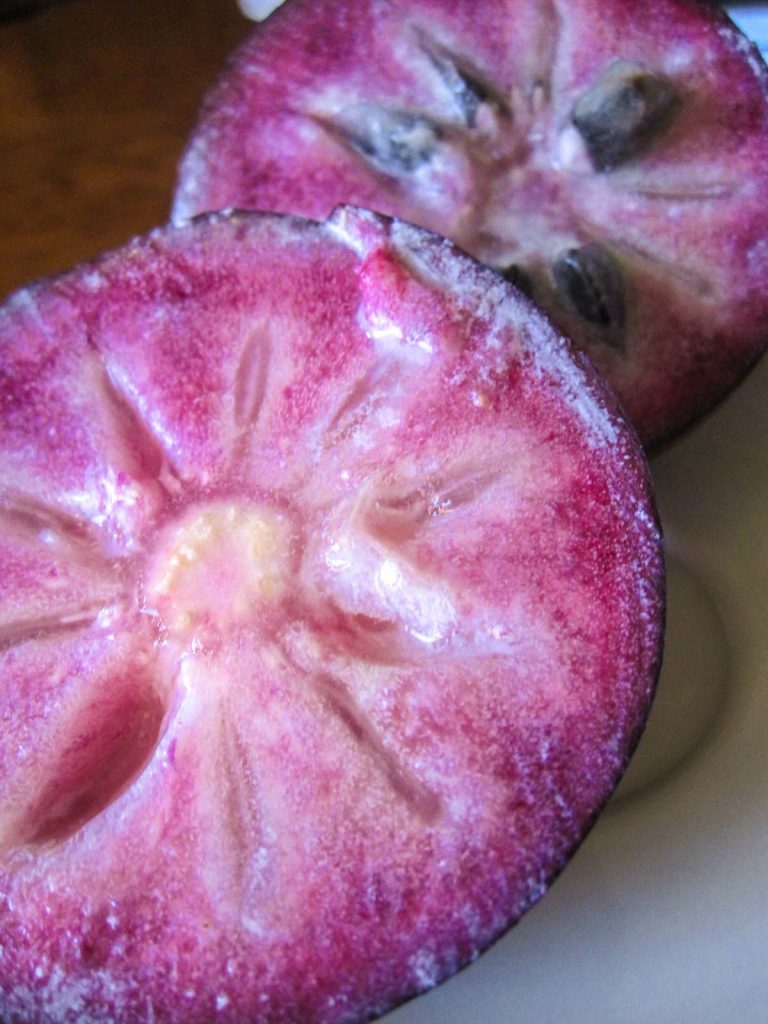
2. Caimito
Closely related to sapodillas and sapotes, caimito is more popularly known as star apple. This is because of the star shaped flesh once you open this fruit the size of a regular orange.
Depending on the kind, caimito can have a green or purple rind, but the flavors are the same.
The caimito was first documented in Peru in the 1500’s and was later cultivated and is now a common Guatemala fruit, in Panama and a Vietnamese fruit.
This fruit in Cambodia is known as milk fruit.
It eventually reached Nicaragua where it’s now grown by locals.
Caimito flesh tastes sweet, especially when fully ripe. And aside from being eaten raw, it is also added into desserts, smoothies, marmalades and jellies.
You’ll also find caimito being added into tropical fruit salads with mango, coconut and oranges.
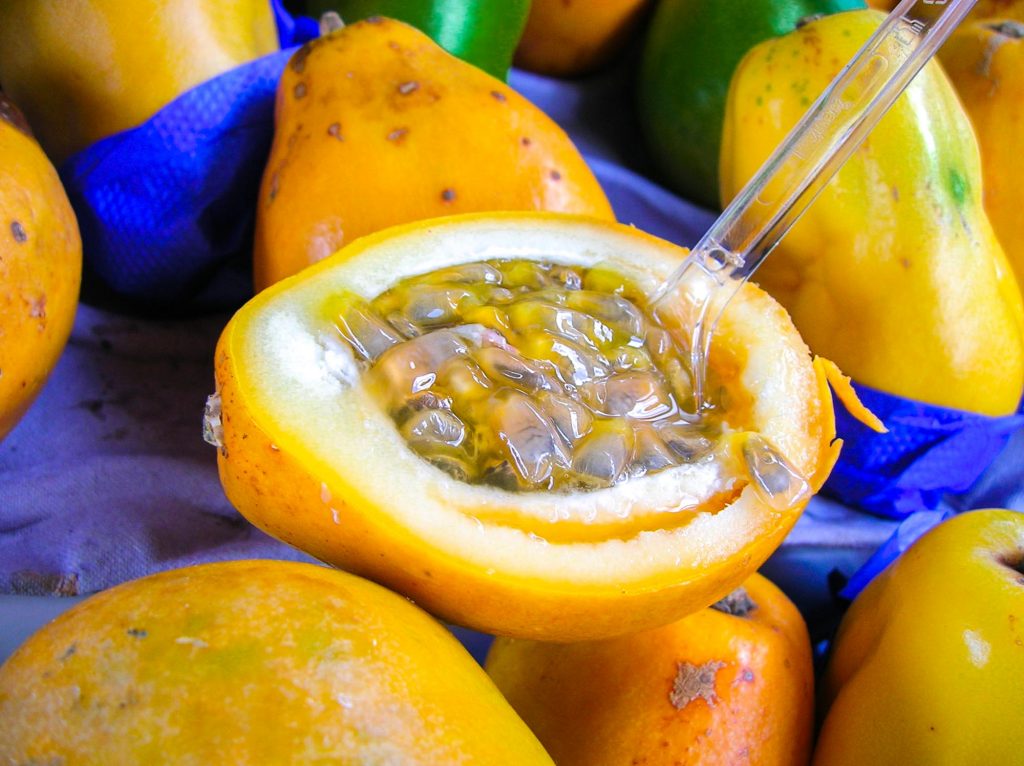
3. Calala
One of the most popular Nicaragua fruits must be calala or more commonly known as passionfruit.
Native to the forests of Northern Argentina, Southern Brazil and Paraguay. It’s known as maracuya as a Colombian fruit. Calala is now widely cultivated in tropical and subtropical countries like Nicaragua.
The calala fruit has a distinct smooth, yellow skin that wrinkles when fully ripe and opening it. You’ll see a yellow-orange pulp that has a jelly-like consistency with tiny brown seeds that can be eaten.
Calala raw has a sweet, refreshing taste with a hint of acid and some floral notes.
But you can also find many shops using this local fruit in Nicaragua. It’s common in desserts, sauces, salads, smoothies, syrups, cakes and ice creams.
4. Cuchinito
More popularly known as exploding cucumber, cuchinito is a popular fruit in Nicaragua that’s unique because it’s actually enjoyed as a vegetable.
Native to Mexico and Ecuador, this fruit eventually found its way to Nicaragua where it’s now widely cultivated.
But why is it called the exploding cucumber?
It’s because when cuchinito becomes fully ripe, it actually bursts open to expel very small seeds.
This tropical fruit can be enjoyed in a lot of ways. When it’s still unripe, it is common in salads. When ripe it’s often boiled, steamed and fried along with other vegetables.
Some even pickle cuchinito like your regular cucumber. When fully ripe, it can be eaten on its own because of its midly sweet taste.
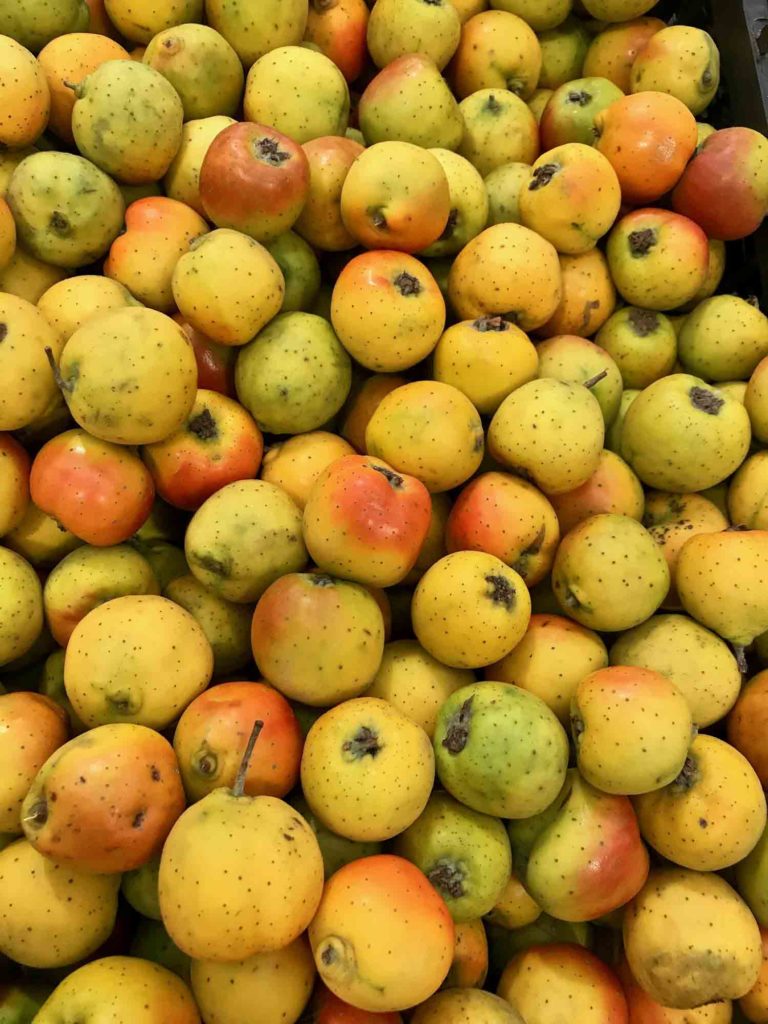
5. Jocote
Widely grown in tropical climates, jocote are common Nicaragua fruits.
It is also native to Northern Peru, Southern Mexico and parts of Brazil where siriguela is one of the most delicious Brazilian fruits.
In Nicaragua, you’ll find different varieties of jocote that has their own harvesting seasons.
In fact, you can easily spot a lot of local vendors selling bags of jocote in the streets of Nicaragua.
Jocote has a thin, waxy skin. Inside reveals a yellow, juicy pulp and a huge pit inside. The sweetness of the jocote can be compared to that of a plum with a slightly acidic aftertaste.
It is common to eat it raw with some salt. Locals also boil jocote in water for syrup on ice cream, in milkshakes and other desserts.
You can also see it being made into preserves to keep the flavour all year long.
6. Jicaro
Native to the tropical forests of Southern Mexico and Central America, jicaro is most known for being a cannonball fruit. It is almost impossible to open.
This is believed to be the fruit’s way of protecting its seeds from predation so it can grow fully ripe.
Unlike most fruits where you don’t get to eat the seeds, the jicaro fruit is prized for its seeds.
In Nicaragua, El Salvador and Honduras seeds are commonly used.It’s one of the main ingredients for semilla de jicaro, which is a type of horchata drink.
It’s also known as Mexican calabash, morro or winged calabash.
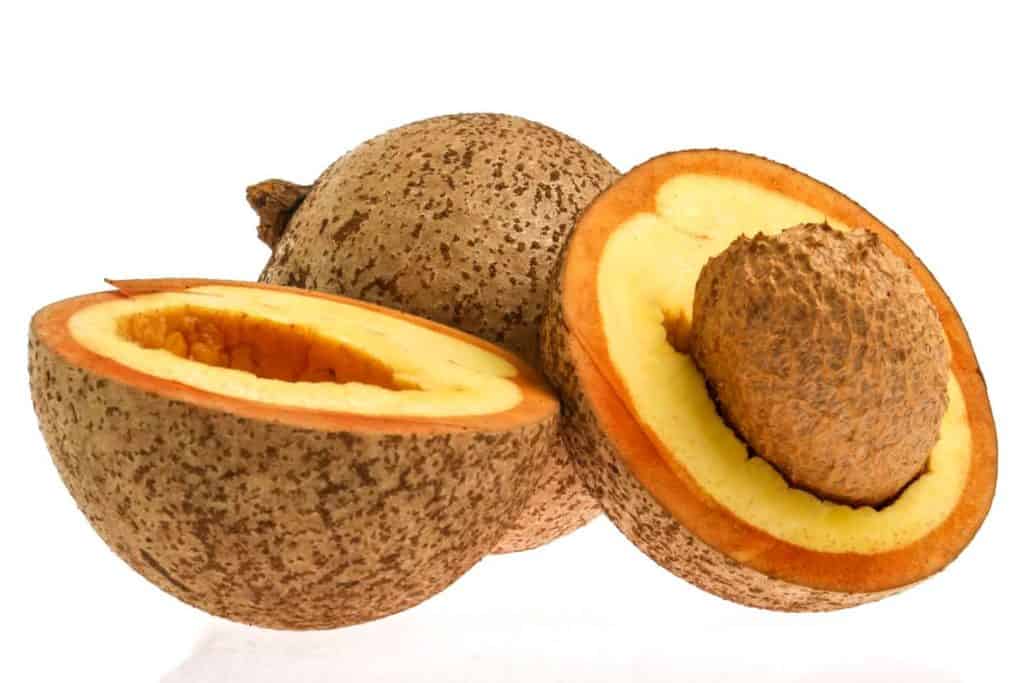
7. Mammee Apple
Don’t confused this Nicaragua fruit with the other similarly named mamey sapote, which you’ll see below.
To make things even more confusing, depending on where you go mammee apple could be called mamey apple or just mamey.
The easiest way to differentiate is mammee apple is round with a yellow flesh and round pit whereas mamey is part of the sapote family and more pear shaped with a reddish flesh and similarly shaped pit.
This is some will ask if you want the yellow or red mamey.
Both are delicious Nicaraguan fruits but they are different things. Mammee apple is actually a berry even though it’s as large as an apple.
It’s great raw and tastes similar to an apricot or passionfruit. So it’s not surprising some people call it a Santo Domingo apricot, South American apricot or tropical apricot. But it’s known as the mammee apple fruit in Trinidad.
So even if you buy the wrong thing, both mammee apple and mamey sapote are great choices.
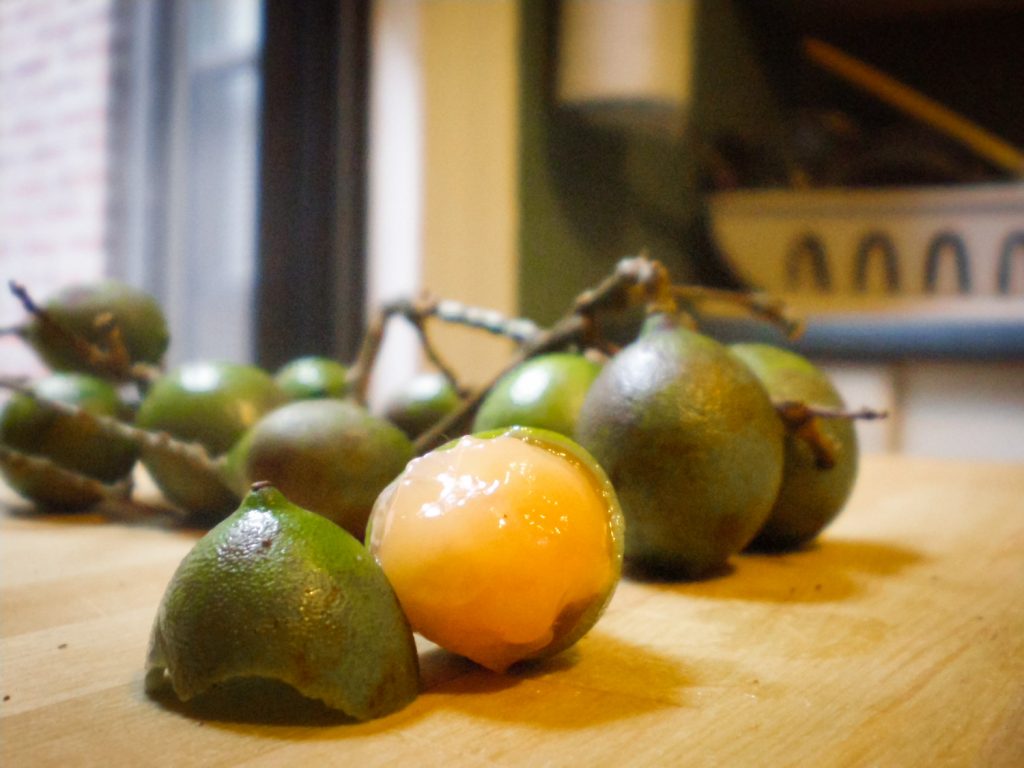
8. Mamoncillo
Most commonly known as the Spanish lime, mamoncillo has a striking resemblance to your typical lime with its green skin.
But it’s not actually a citrus fruit, but it belongs to the family of lychees and rambutan.
In fact, the name “mamoncillo” translates to honey berry. One of the more popular Nicaraguan fruits and a common Cuban fruit. You’ll see a lot of locals eating mamoncillo raw.
It is also added into desserts, beverages and jellies. Nicaraguans even roast mamoncillo seeds and eat them like water chestnuts.
Aside from Nicaragua, mamoncillo is also popular in other Latin American countries like Ecuador.
Puerto Ricans also soak them in rum and sugar. They are added to a popular Puerto Rican bilí cocktail in the town of Vieques.
9. Marañon
Although it’s usually thought of as one of the South American fruits, particularly in Brazil, it is also a common Nicaragua fruits. And you can find them in a lot of local markets around the country.
Marañon is known in Central America as a “false fruit” because its seed is outside of the fruit itself.
Widely grown in Nicaragua, the actual marañon fruit is the shell that contains the cashew seed outside.
But the fruit can also be consumed because of its sweet and tart flavor profile. However it’s often left to rot or used to feec animals because its highly perishable.
10. Pitahaya
It’s hard to miss the pitahaya fruit with its bright yellow skin and spiny protrusions.
This fruit in Nicaragua is more common than the red dragon fruit – one of the most common Filipino fruits and known as naga fruits in Bali.
They are considered the sweetest in the pitahaya family.
A good source of potassium, magnesium and phosphorus, pitahaya is eaten raw or added to fruit salad bowls. Nicaraguans also love using this unique fruit in cocktails, smoothies and ice creams.
It can also be pureed and added to different desserts.
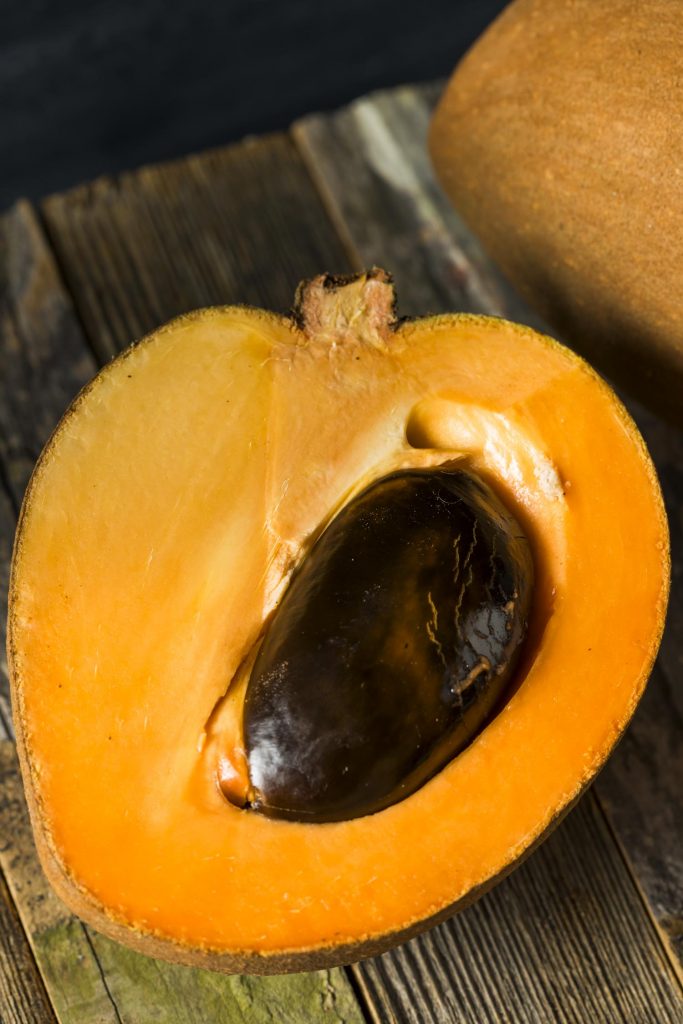
11. Sapote
Sapote is easily mistaken for green apple because of their similar outer skins. But this popular Nicaragua fruit is a member of the Sapotaceae family. It is originally a Mexican fruit that was transplanted.
Sapote has a mildly sweet flavor and a custard-like consistency. It ismostly eaten fresh, although you need to peel off the skin because it has a bitter taste.
You can also find sapote being added to green salads, energy bowls, marmalades, ice creams and sorbets.
12. Sapodilla
Native to Northwestern Guatemala and Southern Mexico, sapodilla is a widely known fruit in Nicaragua.
It’s also one of the more popular Jamaican fruits known there as naseberry. You can also find it as far as Asia where it’s one of the most popular Laos fruits.
Unfortunately, it can easily be mistaken for a potato.
It’s smaller than sapote. Sapodilla has a distinct brown skin that starts as rough and becomes smooth as the fruit ripens.
Unlike most fruits, however, sapodilla should only be eaten when it is ripe.
When you slice the sapodilla, you’ll be welcomed with its squash-like aroma. But the flesh itself is sweet and malty, which is why a lot of locals eat it raw.
You can find sapodillas being sold in local Nicaraguan markets all year round.
And they are also added into fruit bowls, smoothies, milkshakes, muffins, cakes and other desserts.
The tart and malty flavor of sapodilla matches well with other local fruits such as lime, passionfruit, banana and orange.
Make sure you do not eat the seed. It has a small hook on one end that could easily be stuck in the throat.
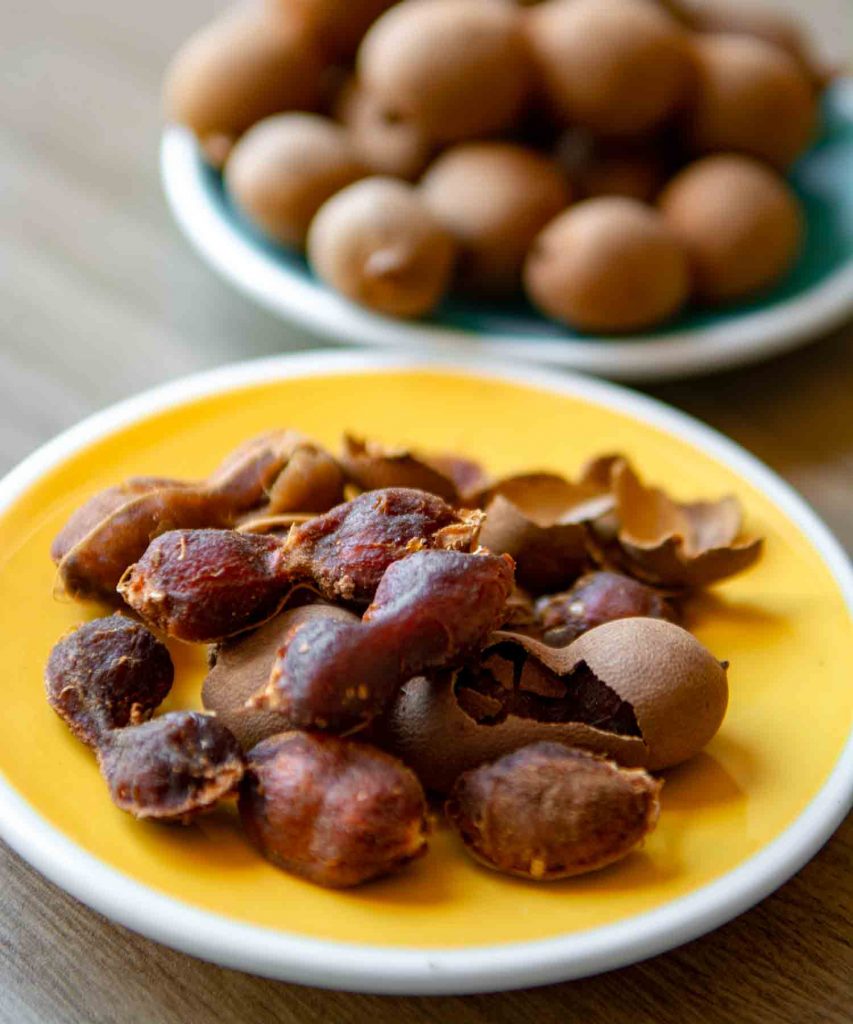
13. Tamarindo
Rounding up our list is tamarindo, which is a widely popular fruit in Nicaragua for its extremely sour taste.
Although native to Africa, it is now cultivated in countries like Nicaragua, India and Pakistan.
The tamarindo fruit itself looks like a bean pod that’s filled with a fibrous pulp. It tends to be very sour when unripe.
But it becomes sweeter once fully ripe where it’s usually eaten. It is often added to desserts or made into jams, sauces and other treats.
I personally love it in frozen popsicles.
Pin it: Nicaragua Fruit
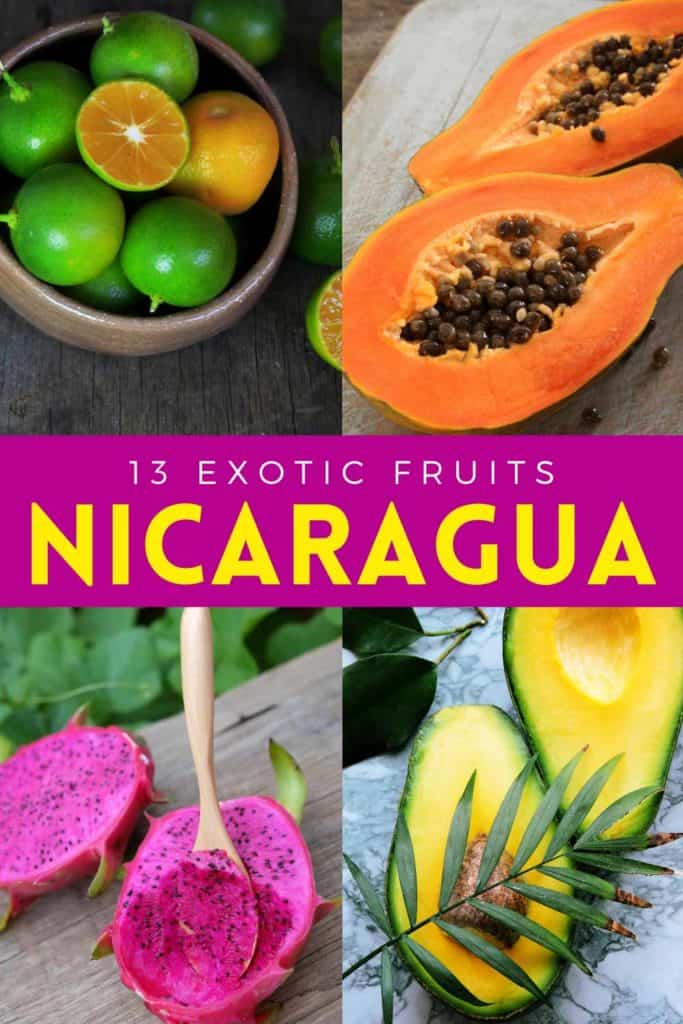
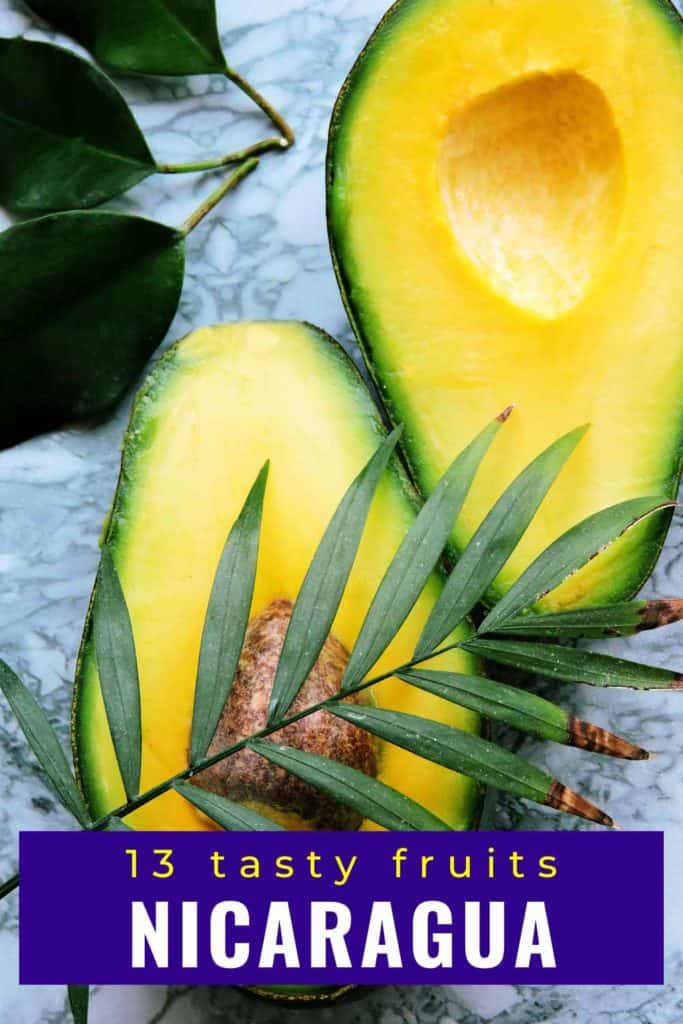
Images (c) Sapodilla: Alicia Garbelman, , Mamoncillo: Howard Walfish,
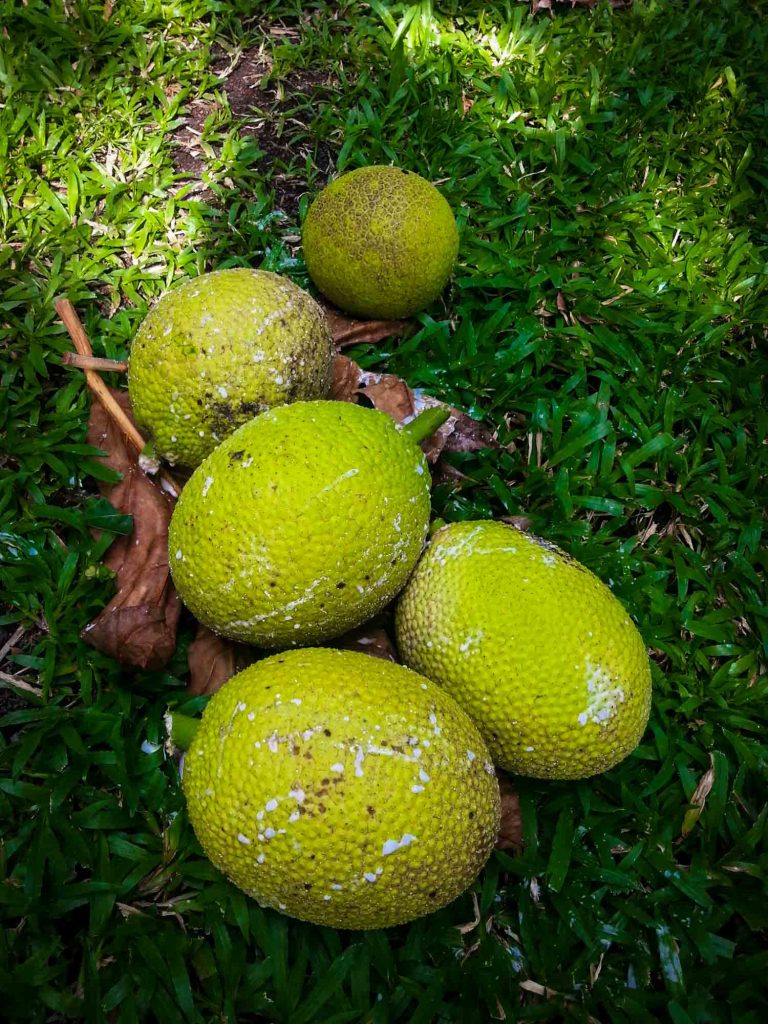
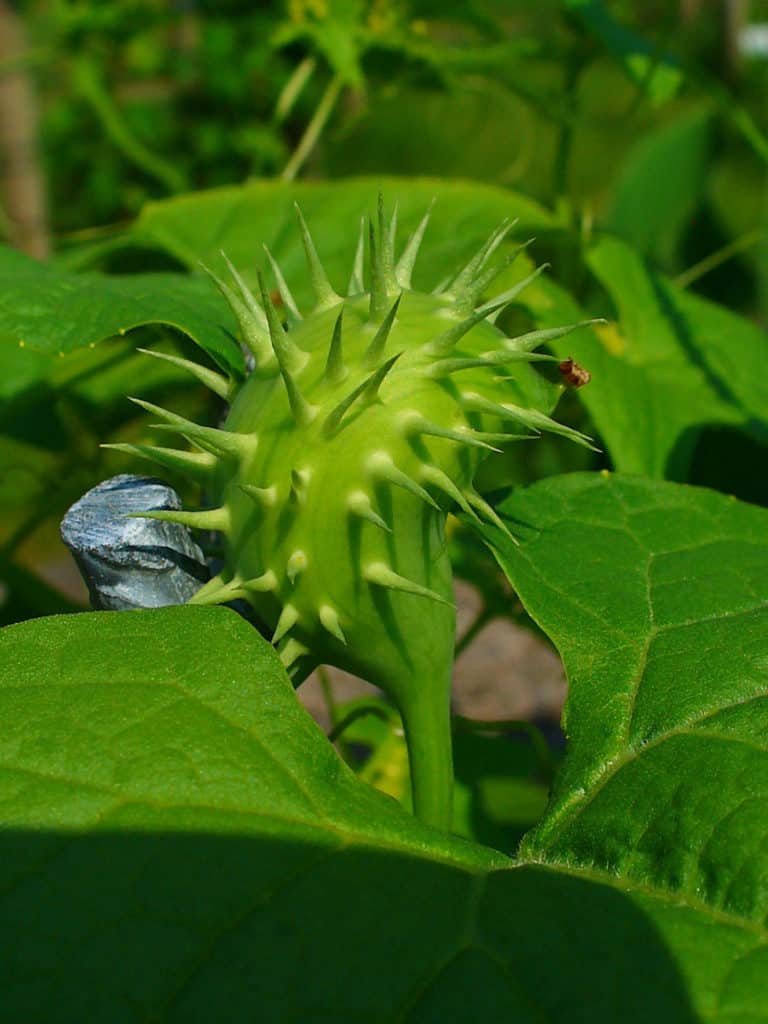
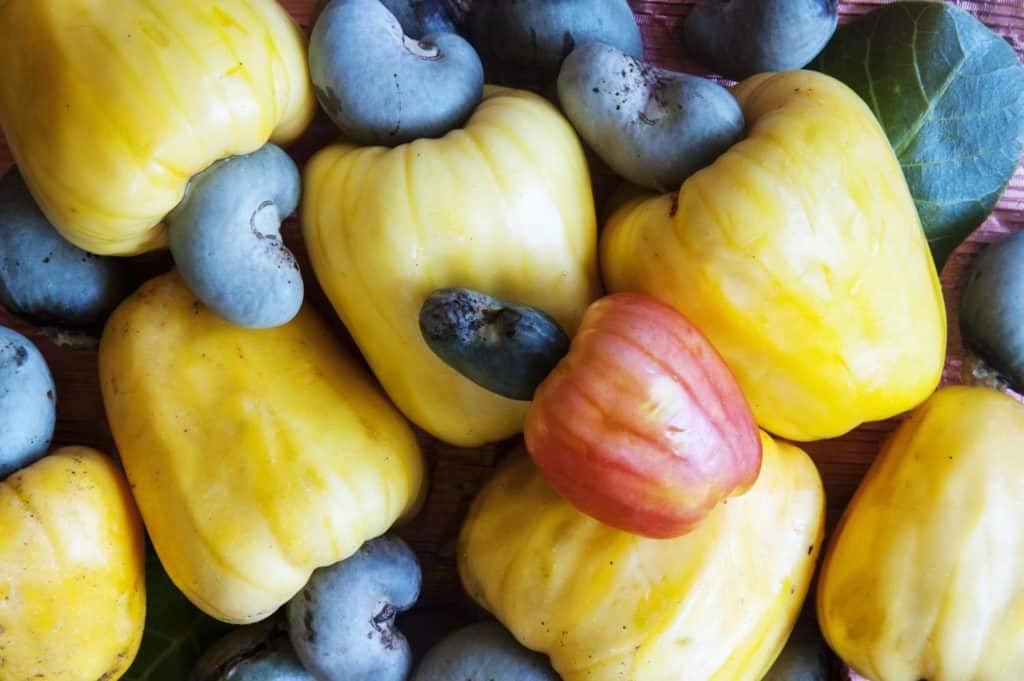
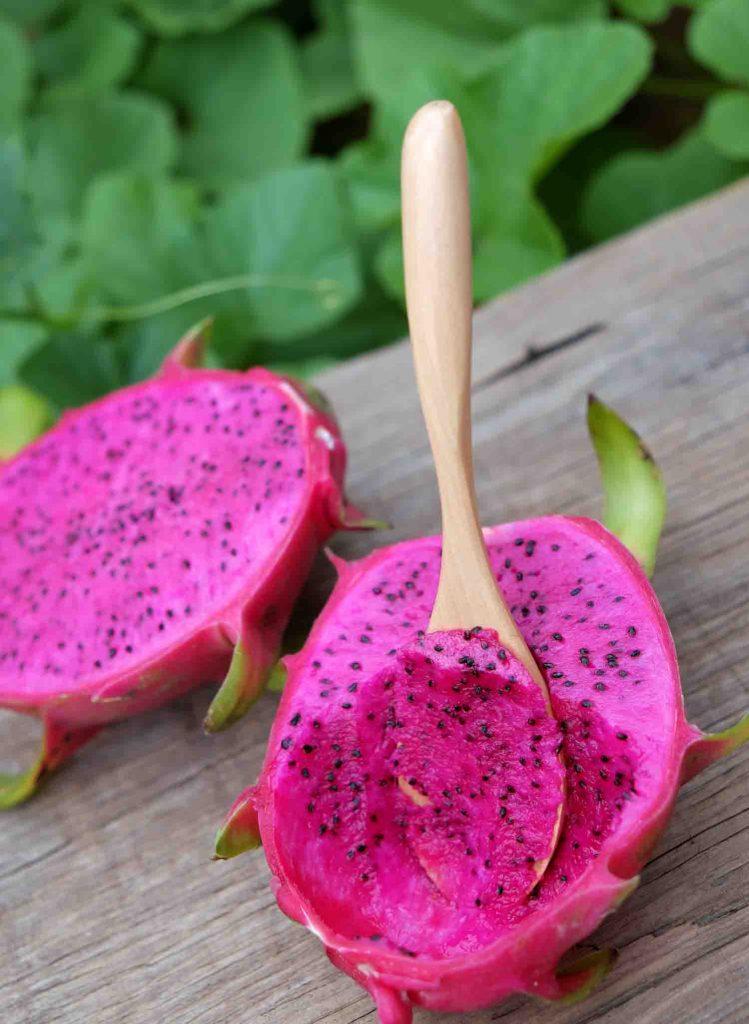
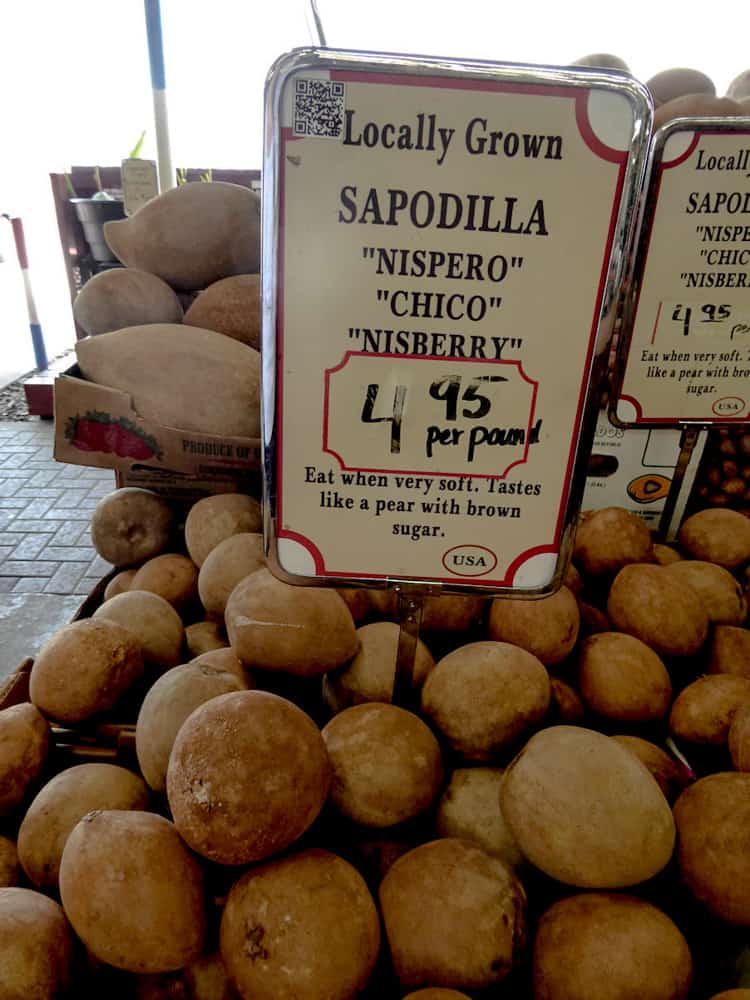
Hi! Nice article and thank you for contributing to knowledge surrounding fruit in Nicaragua. I’m a 20 years resident a d horticulturalist. You have three glaring errors; first off your Jicaro image is a mango. Second is your reference to pitaya, the Hylocereus sp pic you posted is NOT found in Nicaragua, it is indeed the red one you refer to. It is native to Nicaragua, as is the Manilkara sapota/naseberry/sapodilla tree literally found in the forest all around where you visited. The last error is your familial reference to to Sapote, the family is Sapotaceae not Rutaceae, which is the citrus family. Gracias por tu esfuerzo y la próxima vez tal un poco más de investigación que no sea Wikipedia.
Gracias por tomarte el tiempo de corregirme. Estaba usando notas de la última vez que estuve en Nicaragua pero voy a corregir esto con su información. Espero volver a visitarlo en 2022 y pensaré en usted si voy a Ometepe.